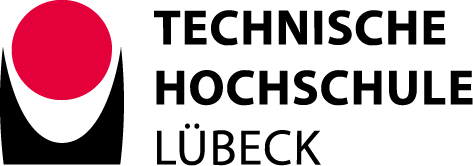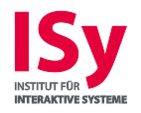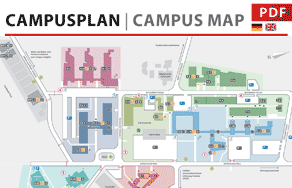Who are you, and what kind of conference was this?
Together, Anna Lena Möller, Instructional Designer of the DLC Lernort Lübeck, and Juleka Schulte-Ostermann, Project Manager of the Digital Learning Campus Lernort Lübeck (DLC Lernort Lübeck), took part in the TURN Conference 2025 and looked back on one year of DLC Lernort at the Übergangshaus in the heart of Lübeck.
This year’s conference took place under the motto “TURN TO ACTION” and focused on three tracks: the design of innovative teaching and learning spaces, the implementation of innovative teaching and learning concepts, and universities as key actors for transfer.
The TURN Conference is a conference series initiated by the Foundation for Innovation in University Teaching (StIL), which premiered in 2022 in Kiel and has now entered its fourth round in Darmstadt.
It provides an annual platform for exchange on teaching and learning in higher education. The conference is open to various disciplines and types of universities. It addresses scholars, lecturers, experts in higher education didactics, managers, administrative staff, university leadership, and students. The focus is on academic contributions as well as collaborative and participatory formats.
How were you able to contribute to the event?
With two contributions over two days, the Institute for Interactive Systems (ISy) was represented at this year’s TURN Conference.
MONDAY.
As part of the track “TURN TRANSFER CONCEPTS INTO ACTION”, Juleka and Anna Lena took part in a panel discussion on Monday, September 29, together with Prof. Dr. Katja Ninnemann (Professor of Innovative Learning Space Design, HTW Berlin), Carlotta Esser (Program Manager for Innovative Learning Spaces at the Stifterverband für die Deutsche Wissenschaft e. V.), and Carolin Then-Bergh (student and Digital Change Maker from the Hochschulforum Digitalisierung).
Using best-practice examples from the Digital Learning Campus Lernort Lübeck and the Reallabor at HTW Berlin, they discussed transfer spaces as key interfaces between universities and society.
TUESDAY.
Anna Lena gave an impulse lecture in the track “TURN INNOVATIVE TEACHING AND LEARNING CONCEPTS INTO ACTION.”
Using an example of a teaching and learning offering developed within the EDIH.SH project, she demonstrated how AI-supported multilingual learning videos can be created to facilitate cross-border networking and knowledge transferwith other Digital Innovation Hubs across the EU.
What were your key takeaways from the conference?
The practical discussions about transfer spaces as interfaces between universities and society highlighted that organizational and logistical aspects, the clarification of responsibilities, and the definition of requirements for new teaching and learning spaces are key success factors.
Equally crucial is expectation management, often part of the project leadership’s responsibilities: unrealistic expectations—whether regarding the project itself or one’s own role—must be continuously adjusted through clear and regular communication to keep all participants motivated and engaged.
Frequently, there are overly high expectations on one side, while on the other, those involved operationally may overlook how much has already been achieved. For sustained project motivation, it is essential to acknowledge not only challenges but also successes and individual contributions.
The communication and outreach (“science communication” & “marketing”) of new learning spaces also plays an important role: teachers and learners must not only be informed but actively encouraged and enabled to participate in the design and use of these spaces.
To achieve this, teachers—an aspect that should already be considered during project planning—need dedicated time resources to experiment with and establish new teaching approaches in innovative spaces.
In his keynote, Dr. Thomas Grünewald offered clear insights into the societal and technological developments currently shaping universities.
He struck a good balance between the expectations placed upon higher education and practical, application-oriented perspectives.
It became evident that demographic change, declining student numbers, and the internationalization of German universities represent central challenges, often intertwined with the digital transformation of tertiary education.
In the joint discussions concluding each 90-minute session—often continued over coffee—it became increasingly clear that demographic change and internationalization will remain the overarching challenges for higher education through 2035 and beyond.
Name one highlight of the event
A particularly striking takeaway was the importance of involving all stakeholders early in the development of new teaching and learning spaces.
Only when teachers, learners, and all other actors are included from the start can these spaces be designed to fit real needs, embraced, and brought to life.
This requires people who actively shape the inter- and transdisciplinary “in-between”—as mediators between people, and between humans and technical systems.
Group photo (from left to right):
Prof. Dr. Katja Ninnemann (HTW Berlin), Anna Lena Möller, Caroline Esser (Stifterverband), Zoe Carolin Then Bergh (Digital Change Maker, Hochschulforum Digitalisierung), Juleka Schulte-Ostermann



![['English'] ['English']](/fileadmin/_processed_/0/c/csm_2025_09_29_Gruppenfoto_TURN2025_Praxisdiskurs_ISy_THL_ba74153812.jpg)

